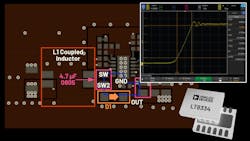Does a DC-DC Converter Have to be Synchronous for Low Emissions? (Download)
Synchronous Silent Switcher converters have set the standard for powerful, compact, and quiet dc-dc conversion. We’ve been introduced to a plethora of these low-electromagnetic-interference (EMI) synchronous buck and boost converters in the past 5+ years.
Such dc-dc converters have simplified the system-level electromagnetic-compatibility (EMC) design in high-power, noise-sensitive environments such as cold-crank preboosts, driving high-current LED strings, and high-voltage power-amplifier sound systems. Monolithic (integrated power switch) boost regulators provide an efficient and more compact solution compared to a controller-based design and are commonly used from source voltages of 5, 12, and 24 V.
